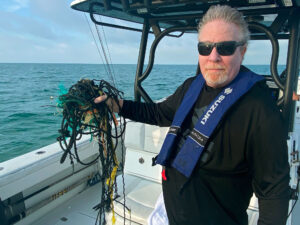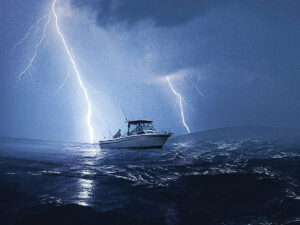Darkness covering offshore water conceals one of the sea’s greediest creatures-sharks. They often feed at night when their prey is disadvantaged by night blindness. But anglers can turn these predators into prey by understanding the shark’s keen sense of smell and its electrical impulse system.
In the Pacific Ocean, less than a mile off Waikiki Beach, blacktip, whitetip, hammerhead, and Galapagos shark-many in the 200-plus-pound range-hunt the reefs through the night. Sportfish Hawaii (www.sportfishhawaii.com) specializes in midnight rendezvous with these fish. I tagged along one night to find out about night fishing for shark from masters of the game.
These sharkers capitalize on their quarry’s keen sense of smell by chumming. But a shark’s hunting arsenal isn’t limited to smell. The underside of a shark’s snout is equipped with highly evolved cells called ampullae of Lorenzini. These cells are capable of detecting minute electrical impulses created by living organisms. Traditional metal cable leaders on your gear emit high voltage that can actually repel sharks, so at night ditch the metal. Savvy night sharkers opt for rope-thick 700-pound test monofilament instead, crimped to a 9/0-long-shank trolling hook.
Night-feeding sharks are territorial, so a slow drift with a consistent bait presentation will produce more sharks than anchoring. Optimal depth range for your bait is 50′ to 200′. And what should your bait consist of? Hawaiian night sharkers prefer chopped aku (skipjack) for chum and otaru (skipjack heavier than 20 pounds) lowered to 10′ over the bottom with 16-ounce weights. When the sharks are holding tightly to a wreck or a point on the reef, use a sea anchor to slow the drift. For sharks of significant size, the experts go with heavy artillery: 130-pound class gear is the norm.









